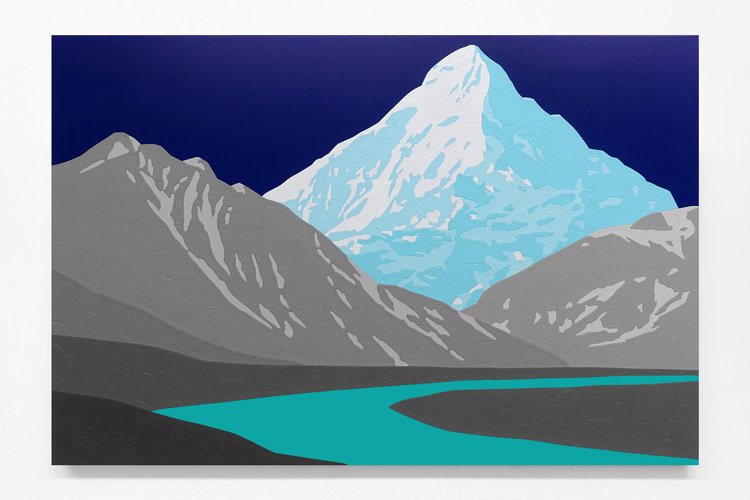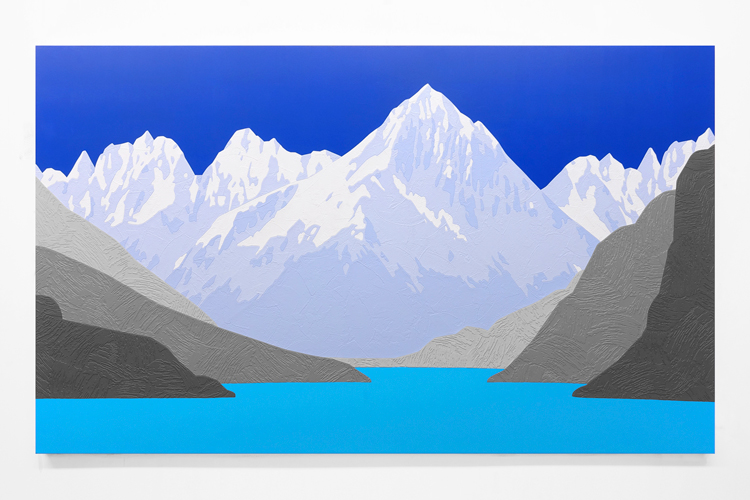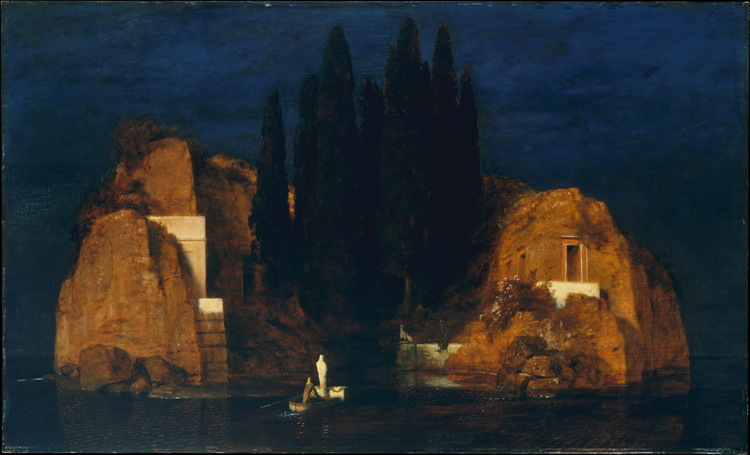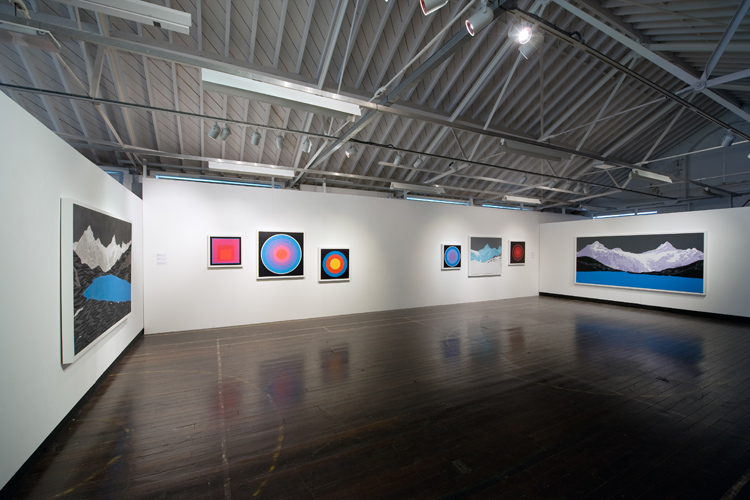Alumnus interview with the Royal College of Art
rca.ac.uk
Hannah Brown: How did you decide to become an artist?
David Wightman: I'd always obsessively drawn and painted as a child but had never thought of art as a career. I simply didn't think it was possible. It was only through encouragement from my high school art teacher that I decided to pursue art further. I completed my initial studies near where I grew up in Greater Manchester before moving to London for my degree. I went straight from my degree to the Painting MA at the Royal College of Art. I was 21 when I started at the RCA so was quite wide-eyed and naïve. Once I graduated, I knew I wanted to keep painting and showing my work - I simply haven't stopped.
HB: How do you work?
DW: I make abstract and landscape acrylic paintings using collaged wallpaper. Wallpaper serves as a formal element within my work but also as a personal reference to my own background. My paintings use appropriation and pastiche to explore abstraction and landscape - genres I associate with idealism, aspiration, and the past. Every piece starts with drawing and exercises in colour combinations. I like to work in variations so will often revisit compositions to experiment with different textures, colours, and formats.

Frances, acrylic and collaged wallpaper on canvas, 100 x 150 cm
HB: What was the most important thing you learned at the RCA?
DW: As I was so young when I started at the RCA, there were so many simple technical things I learned. These have proved invaluable over time. My studio was next door to the stretcher-making workshop so I was endlessly pestering the technicians for advice and tips. Also, learning to talk about my work and being open to criticism was a difficult but necessary thing I learned while at the RCA.
HB: How has your practice changed over time?
DW: Many of the themes and materials that have dominated my work since graduating from the RCA were worked-out or first explored while I was at the RCA. My twin obsessions with abstraction and landscape have continued. As has my use of wallpaper. I've become more interested in colour though and would say colour has become the dominant preoccupation of my work in recent years. My final show pieces at the RCA demonstrate my nascent interest in wallpaper, abstraction, and landscape. It was only after I graduated that I decided to separate both genres and felt fully free to explore colour.

Atalanta, acrylic and collaged wallpaper on canvas, 100 x 200 cm
HB: What memorable responses have you had to your work?
DW: Viewers are often confused as to how I make my work. The surfaces of my paintings are made from collaged wallpaper using a technique similar to marquetry. Once collaged, each area of wallpaper is painted. Viewers very often think I must use some kind of industrial process or 3D printer to make my paintings; whereas the process is entirely done by hand.

Arnold Böcklin - Isle of the Dead, 1880
HB: What’s your favourite art work?
DW: I saw one of the versions of the Isle of the Dead by Arnold Böcklin two years ago at the Metropolitan Museum of Art in New York. I was amazed at how different it was from its reproduction. I'd only known the work and its variations from reproductions and had always thought of it as an influence on my landscape work. Seeing it in the flesh was a fantastic experience. During the same visit I saw a dozen or so paintings from Josef Albers' Homage series. Again, I was amazed at how different they seemed from their reproductions. It's easy to think you know a work if you're familiar with its reproduction. Seeing so much of Albers work in one place made me appreciate his achievement even more.
HB: What is your dream project?
DW: I'd love to make a large, site-specific, permanent landscape painting. My largest landscape piece so far is 200 x 400 cm (Hero, for House / Brighton Festival) but I'd love to have the opportunity to make something even bigger and for it to have a permanent home.

Homage to Loreleia, Berwick Gymnasium Gallery, Berwick-upon-Tweed
HB: What’s been the biggest highlight of your career?
DW: I was selected for the Berwick Gymnasium Arts Fellowships in 2010. Living and working in such a beautiful place (Berwick-upon-Tweed, Northumberland) for six months was massively beneficial to my practice. I was also honoured to be commissioned to make a site-specific painting for House / Brighton Festival in 2013. The festival was curated by Mariele Neudecker whose work shares similar concerns to my own.
HB: What’s the best piece of advice you’ve been given?
DW: Keep painting! And be punctual.
Hannah Brown and David Wightman